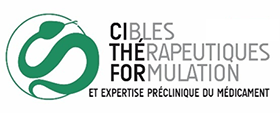L'article intitulé "Agile quality-by-design development of alginate microparticles for encapsulation of hydrophilic drug" vient d'être publié dans "Colloids & Surfaces A : Physicochemical and Engineering Aspects".
Auteurs : Asta-Ramaha Synthia Mackin-Mohamour, Julia Budzinski, Thierry Bastogne, Thibault Roques-Carmes, Veronique Sadtler, Philippe Marchal, Anne Sapin-Minet, Marianne Parent
Doi : https://doi.org/10.1016/j.colsurfa.2024.134053
Résumé :
The development of alginate microparticles for encapsulation of hydrophilic drug is addressed. The alginate microparticles are produced by the emulsification/gelation process. The objective of this study is to optimize the encapsulation of sunset yellow, a model of small hydrophilic drug, by the means of an agile quality by design (QbD) approach. Five input factors are considered: the alginate concentration (2-7% w/V), the drug/polymer ratio (0.1/1-0.5/1), the cross-linker addition flow rate (1-1.6 mL/min), the cross-linker volume (5-10 mL), and the crosslinking time (15-60 min). Critical quality attributes (and their associated specifications) are the particle size [30-150 µm] and polydispersity, the encapsulation efficiency (>50%), and the drug loading (>10%). The implemented agile method follows three successive QbD sprints, each based on a specific design of experiments (DoE). First, a screening of the process parameters is performed using a Plackett-Burman design, followed in a second sprint by the implementation of a central composite Hartley’s design to identify the design space and to extract four eligible control operating regions where the probability to meet the CQA specifications is above 95%. In the last sprint, one of these optimal operating conditions has been qualified by testing eight end points of the region through the application of a full factorial design. This operating region corresponds to a combination of three factors: alginate concentration in [6.7;7]%, drug/polymer ratio in [0.29;0.34]w/w and a curing time in [40;60]min.


